The Kori Bustard Bird is the heaviest bird capable of flight in Africa and stands among the list of the largest birds in the world quite comfortably.
But this accolade doesn’t apply to the females as they are significantly smaller than their male counterparts, a feature among birds called sexual dimorphism.
Kori bustards belong to the family, “Otididae” which is made up of large-bodied birds ( other bustard species) such as the Arabian bustard, the Australian bustard, the Great bustard, and the Great Indian Bustard.
With an average weight of about 13 kg (28.6 lb), you might think the Kori bustard isn’t that heavy, but it is, though it’s just light enough to fly.
Are you thinking about buying binoculars to have a good look at all the magnificent birds of Africa?
How to recognize the Kori Bustard Bird?
Kori Bustards have a thin crest on the head that is black in color, the eyes are a pale yellow with a white stripe just above them.
The neck, chin and throat are white with very fine black barrings, while on the hind neck is a black collar that extends just to the upper breast sides.
The feathers at this neck and throat region are fluffy and usually give the neck an appearance of being larger than it really is.
The underside is white, the back is predominantly brown, the shoulder area has a checkered white and black pattern, while the tail and flight feathers have bands of gray-brown and white.
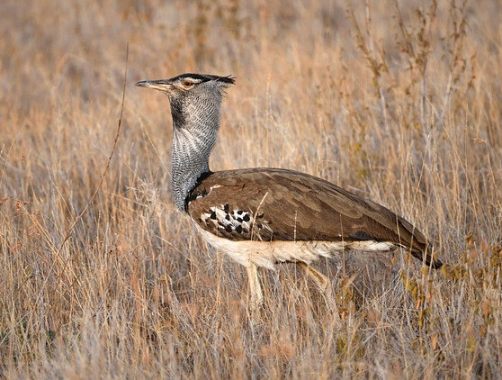
Their heads are relatively large, and their legs are quite long. The beak which has a green tinge is flattened at the base, straight and long. Their feet have three toes, all facing forward that help with their terrestrial lifestyle.
How big and heavy are Kori Bustards?
The male kori bustard is heavy, and relative to their wing size, can be considered the heaviest bird capable of flight together with another bustard species, the great bustard. Let’s look at the numbers.
The male kori bustard has a weight ranging from 7 to 18 kg (15.4 to 39.6 lb), while the larger males will reach up to 20 kg ( 44 lb).
It has a standing height of between 105 and 135 cm ( 3’5” and 4’5”), making it tall enough to feed from brushes and tall shrubs.
The wingspan ranges from 230 to 275 cm (7’7” to 9’).
Let’s compare the kori bustard to the trumpeter swan ( the heaviest bird native to North America).
The male trumpeter swan can reach 13.6 kg ( 30 lb) in weight with a wingspan of 185 to 250 cm ( 6’1” to 8’2”).
This comparison shows that relative to other large flying birds, the Kori Bustard Bird is carrying more mass, but with just a longer wingspan, meaning they have to work harder than others during flight.
Thus, spotting a male Kori Bustard in flight is a scene worth watching. Have a look at the video below to see how they fly off!
The female Kori bustards weigh from 3 to 7 kg (6.6 to 15.4 lb). When standing, their length ranges from 90 to 112 cm ( 2’11” to 3’8”), and their wingspan ranges from 177 to 220 cm ( 5’10” to 7’3”).
In summary, the female kori bustard is 20-30% smaller in size and 2-3 times lighter when compared to their male counterparts.
How do they fly?
Due to their weight, Kori Bustards usually fly when necessary and will spend most of their time on the ground.
When they intend to fly, they break into a run and launch into the air with heavy wing beats.
Once airborne, the task becomes slightly easier and they will fly with slow, steady wing-beats, with the legs folded back and the head extended forward.
They don’t fly for long periods of time, they usually fly low and will land shortly after taking off. As they land, they keep their wings spread and will only fold them once they have slowed down to walking speeds.
Want to find the best binoculars for a safari? Check out my blog post here!
How do Kori Bustard Birds sound?
When compared to other bustard species, the kori bustard is shy and silent except when alarmed, protecting their young, or during the breeding season.
When alarmed, they will emit barking sounds that can be described as a, “ca-caa-ca” and that carry for some distance and can be repeated severally for up to 10 minutes.
This call is emitted by both sexes and also chicks when startled. During the mating season, males will produce a low-pitched resonating booming sound, which ends with the bill snapping loudly ( this can only be heard at close range.)
The Habitat Of the Kori Bustard Bird
The Kori Bustard will be found in open grassy areas that have sandy soil, and near isolated clumps of trees or bushes.
They will also be found in semi-desert, open dry bushveld, sparsely wooded savannah, highveld grassland, and arid plateaus.
The places they prefer usually have low rainfall yields of between 100 and 600 mm ( 3.9 and 23 6 in) annually.
You’ll also find them following wildfires or large herds of grazers such as wildebeests.
From time to time, they’ll move near human habitats especially when food is scarce, and will be found in areas with wheat plantations and sparse tree cover.
Generally, they avoid forests and well-wooded areas due to the fact that they need a lot of space for take-off.
The sparse woodlands are to provide an escape from the scorching heat of the midday sun. Sometimes they make use of hilly regions, but only during the nesting season.

Where to find them in Africa?
There are two distinct populations of Kori Bustards in Africa; one in the South of Africa and the other in the more arid Eastern Africa region ( horn of Africa region).
They are residential birds in their geographic zones and will only migrate due to rainfall.
In Southern Africa, they will be found in Namibia, Botswana, South-Western Zambia, Southern Angola, the central plateau of Zimbabwe, Southern Mozambique and Eastern South Africa.
The Limpopo River basin is a very good place to spot them. This population is also very common in Tanzania, especially in the Serengeti and Ngorongoro National Park.
The second population is found in South Sudan, Ethiopia, Somalia, Uganda, and Tanzania. Kenya has the largest population of this particular group of kori bustards.

What do they eat?
Kori Bustards are omnivores. Seeds and grasses form the most important plant material to them, but they will also feed on acacia gum, green leaves, wild melons, wildflowers, roots and berries.
Insects are the most important animal food to them, with some of the insects they like to feed on being locusts, beetles, grasshoppers, caterpillars, termites, and crickets.
They will also feed on mollusks (such as snails), scorpions, and small vertebrates such as small rodents, small snakes, chameleons, lizards, nestlings, and other birds’ eggs.
They spend a lot of their time on the ground feeding and will feed in the morning and evening, taking shelter during the hottest part of the day.
You’ll find them following large herds of ungulates to feed on the insects that are flushed or to pick through the dung for beetles.
During outbreaks of locusts, or caterpillars, Kori Bustards will be found gorging themselves fully. They drink regularly from water sources, even though they may be found close to 40 km ( 24.8 mi) away, and rather than scoop water like other birds, they suck.
Are you thinking about buying binoculars to have a good look at all the magnificent birds of Africa?
The Mating habits of the Kori Bustard
There are two subspecies of Kori Bustard in Africa, namely A. K. Struthiunculus ( found in the North) and A. K. Kori (found in South Africa); both have different breeding times.
In the North, the breeding season is from December to August, while in the South, the breeding season is from September to February and closely follows the rainy season.
Lek mating is when male birds will congregate in a group and engage in competitive courtship rituals and displays in a bid to entice females that are visiting.
Kori bustards practice lek mating and are highly polygamous. Males will display their features at specific sites usually in the morning and evenings.
During the courtship displays, the males will inflate the esophagus, making the neck puff four times its normal size, and inflate the gular pouch at the throat.
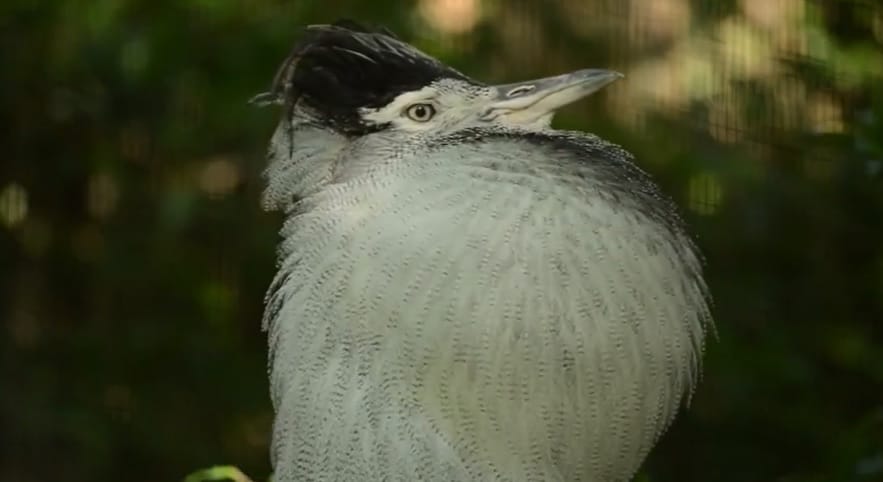
The head is held back, with their crest erect, bill open and cheeks bulging. The front feathers are puffed making the birds highly visible up to 1 km (0.6 mi) away, the tail is raised upwards, while the wings dangle downwards.
To intensify their look, they strut with exaggerated bouncing steps, and will emit a low-pitched booming sound, while snapping their bills open and shut.
Females will visit the lek site and choose the male that most catches their fancy. During this period, males are aggressive towards each other and fights usually break out between the males, with rivals smashing bodies and stabbing at each other with their bills.
Reproduction and development of the Kori Bustard.
The male Kori Bustard is an all-show and no go kind of dad, mating with as many females as he can attract yet doing absolutely nothing when it comes to taking care of the chicks.
The nests are rather plain and unremarkable in that the female makes a shallow hollow on the ground in the proximity of a shrub, tree, rock outcrop, or termite mound.
Each breeding season, the female will lay at least two eggs, though this corresponds to how abundant the food supply is.
The eggs laid are usually glossy, or waxy with dull colors that help them blend into the surrounding soil.
The incubation period lasts about 23 to 30 days, with the female spending all her time at the nest, except for the occasional stretching of feet and wing muscles.
The female’s plumage which is usually duller than the females helps her camouflage perfectly with the environment, and to augment this camouflage, she will pick pieces of vegetation and place them on her back.
During this period, she tries to be as silent and unnoticeable as she can be, moving with a swift but silent crouch and staying as still as possible when other animals are close by.
The newly hatched chicks are usually vulnerable to predation but are well-camouflaged and precocial ( chicks that are well-developed and relatively mature at the moment of hatching).
The survival rate of the eggs is about 67%, which is due to the effective nest camouflage set up by the female during the incubation stage.
Interaction with other species.
As stated above, Kori Bustards like following herds of ungulates such as zebras and wildebeest for the insects and small mammals disturbed by their movements.
They will also be found with other bird species such as the Northern and Southern carmine bee-eaters, and fork-tailed drongos.
These birds will catch a ride on the kori bustard’s back as it strides through the tall grasses benefiting from the insects flushed. They also take advantage of these small birds’ extra vigilance to help in escaping predators.
Predation
The kori bustard is big-bodied and is mostly terrestrial, which is bound to attract a lot of predators. In the savannah, kori bustards face predation from leopards, jackals, wild dogs, caracals, lions, cheetahs, African rock pythons and spotted hyenas.
Their large size deters birds of prey from preying on adult bustards, but the martial eagle has been known to actively prey on them.
Chicks on the other hand are fair game to a number of predators from baboons, warthogs, mongoose, and birds of prey such as verreaux’s eagle, verreaux’s eagle owl, and tawny eagle.
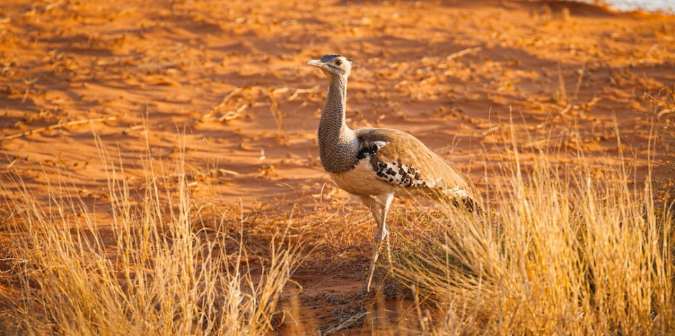
Kori Bustard vs Secretary Bird.
These two birds have been documented tussling in the long grasses of the African savannah. They are more or less evenly matched with the secretary bird being taller and nimbler while the kori bustard is heavier with a longer wingspan.
Both birds are rather aggressive at defending their territories and towards other animals, particularly at common points such as watering holes.
Also, secretary birds feed exclusively on meat while the kori bustard is an omnivore and when it comes to a standoff, each can hold its own against the other.
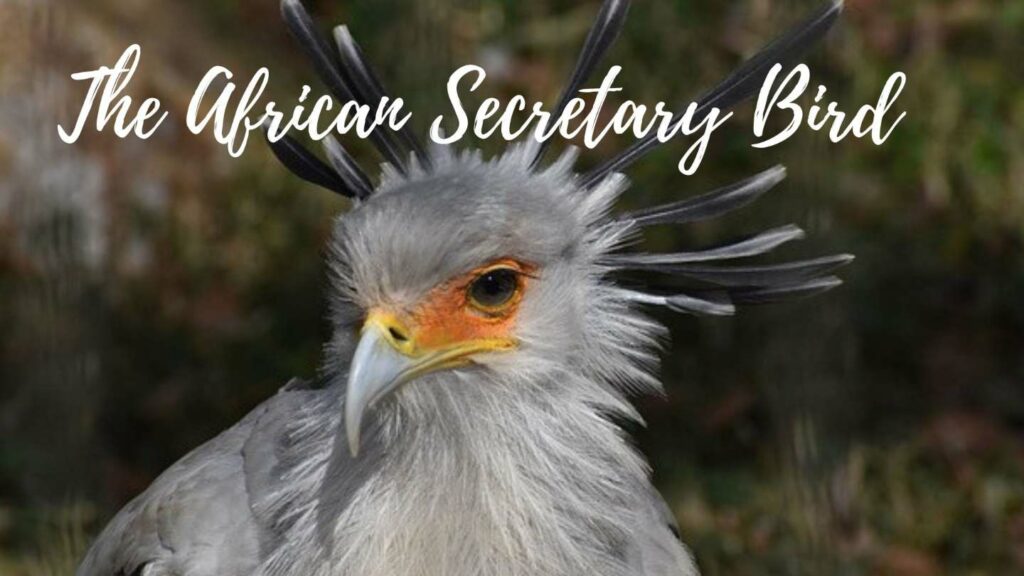
Conservation status
Kori bustards are considered near threatened. Their population decline is slow, and they have a healthy geographic distribution across Africa. They are threatened by human activities such as ranching, livestock farming, and hunting.
Kori Bustard’s FAQS.
Finally, we have answered some FAQs on the Kori Bustard bird for you:
Why are they called Kori bustards?
The kori bustard’s name comes from the Tswana word for the bird – Kgori.
Why is the Kori Bustard Bird called the national bird of Botswana?
The kori bustard was usually associated with royalty in Botswana as was usually reserved for food only for them.
Also in the Gui/Gana culture in Botswana, a very important ceremony which is the male coming of age ceremony is named after the kori bustard’s crest.
The bird also features heavily in the San people of Botswana, songs, dances and ancient rock paintings.
What is the lifespan of the Kori bustard?
Not much is known about how long kori bustards live in the wild, but in captivity they are able to reach a maximum of 28 years.
Do Kori bustards have a preen gland?
Kori bustards do not have a preen gland like most other birds. The preen gland produces oils that help birds in their preening process.
Kori bustards will thus have dust baths to help in keeping clean and remove of parasites. They also produce a powder that helps keep them clean.
Want to find the best binoculars for a safari? Check out my blog post here!
My Final Conclusion.
I hope that you enjoyed this article on the Kori Bustard Bird very much, but if you have any more questions about this bird, please feel free to ask them down below in the comment section.
You can also join (one) of my social media pages below for more of my adventures in Africa!
I wish you happy travels!
Kind regards,
Lizzy
I now have a YouTube channel as well!
YouTube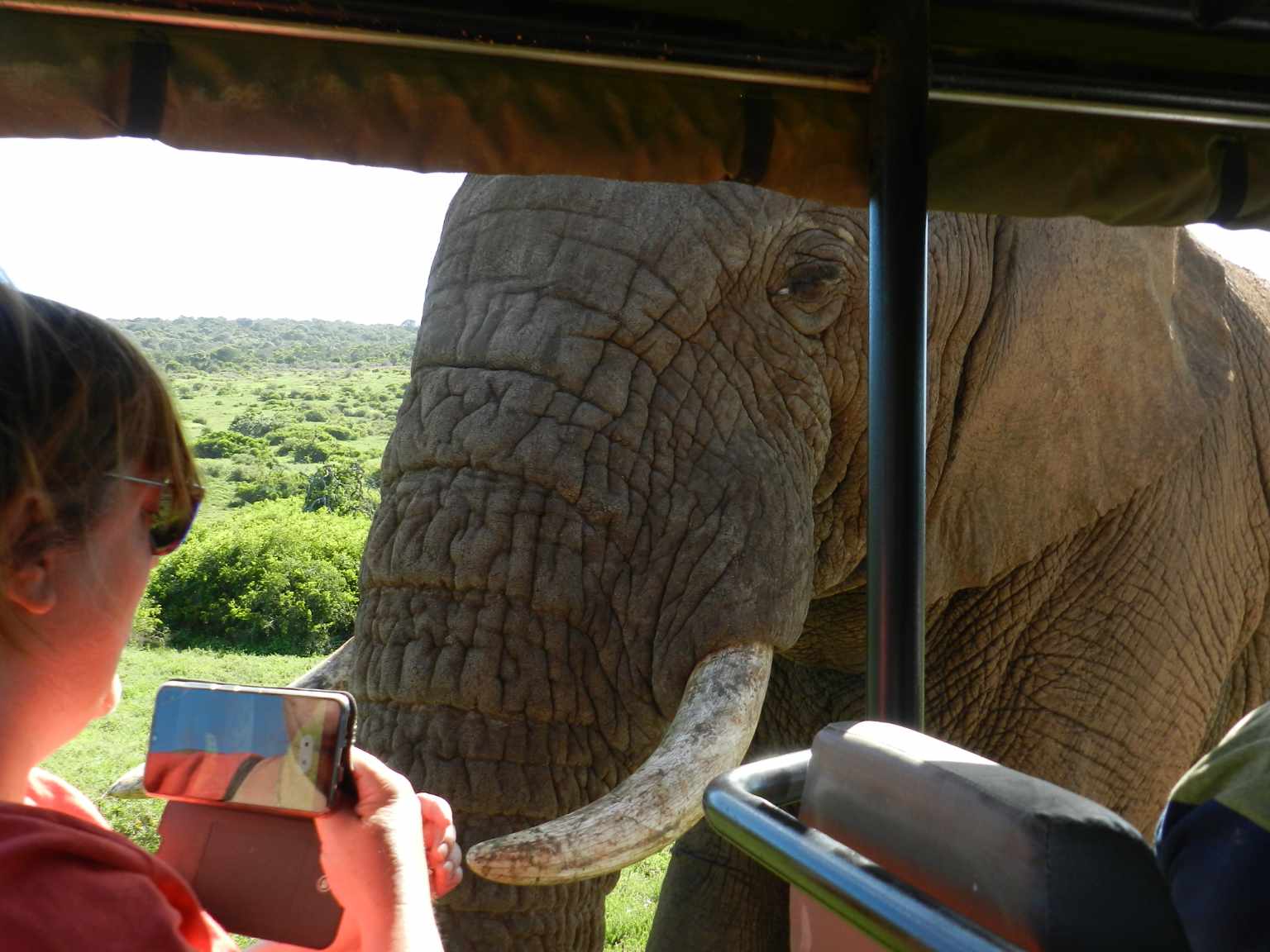
Hello Africa travellers!
Who am I? Well, the least you can say is that I am quite crazy about Africa, its nature, its climate, its culture, and more.
As a young woman in my twenties, I had already traveled to several African countries by traveling along in an overlander on my own and mostly camping ( or glamping ) and just fell in love with the diversity of it all.
So much, so that at the age of 26, I went back to university to study biology, which, unfortunately, I couldn’t finish because of health reasons (yes, I got sick from a tropical disease, oh cynicism). But this did not stop my dream of traveling back to Africa several times, and I still do.
My dream was back then to leave Europe and go study animal behavior, especially the elephants (sure, that’s every girl’s dream haha), but I am also very much intrigued by hyenas and other “ugly African animals“.
So, I “kind of” have a little bit of a scientific approach to my articles, when I write about African birds, for example. And most of all: the passion.
But life goes on, you move from one side of the country to the other, you get sick again and top it off with lower back problems, and before you know it, you are over 50 hahaha!
Now, I still travel to Africa, but take it a bit “easier” than the good old camping days, and stay in comfortable, yet affordable accommodations, together with my husband Wouter.
These are some of the countries I have traveled to: Kenya, Tanzania, Zanzibar, Malawi, Zambia, Zimbabwe, South Africa, Namibia, Botswana, Tunisia, and a little bit of Lesotho LOL .
While clearly not being African territory, but Spanish, I also visited Gran Canaria and Tenerife, and location-wise, I consider them “African”, because of their climate and nature, sue me :-p
The last trip I took was to South Africa in the year 2023, and it sure got the fevers for Africa back! From the Barberton mountains to the Drakensberg and the Southcoast, one month wasn’t enough at all to see the whole country, so we’ll be back! At ease and with a little bit more luxury than in my younger days haha!
I wish you happy travels!
Kind regards
Lizzy

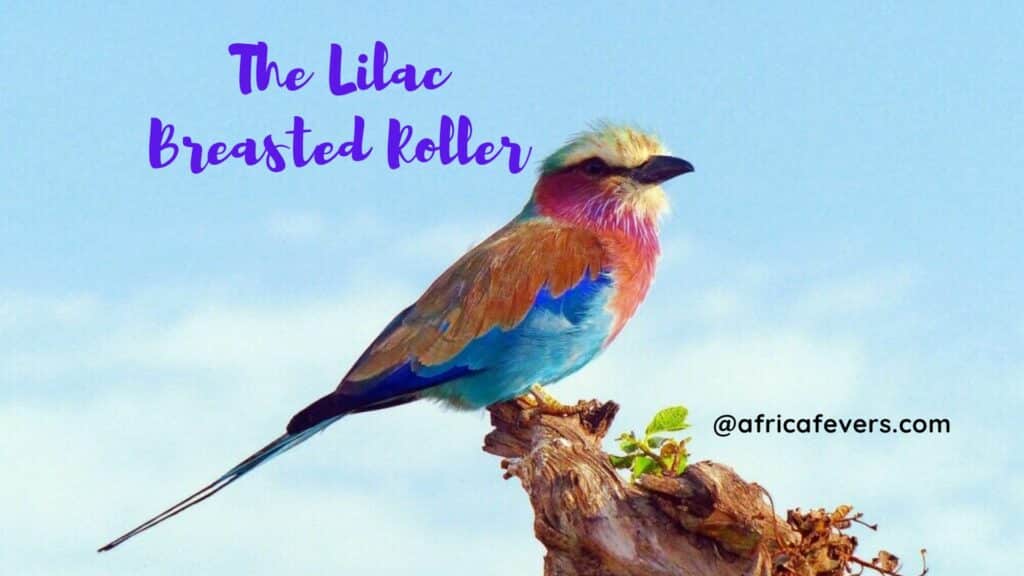
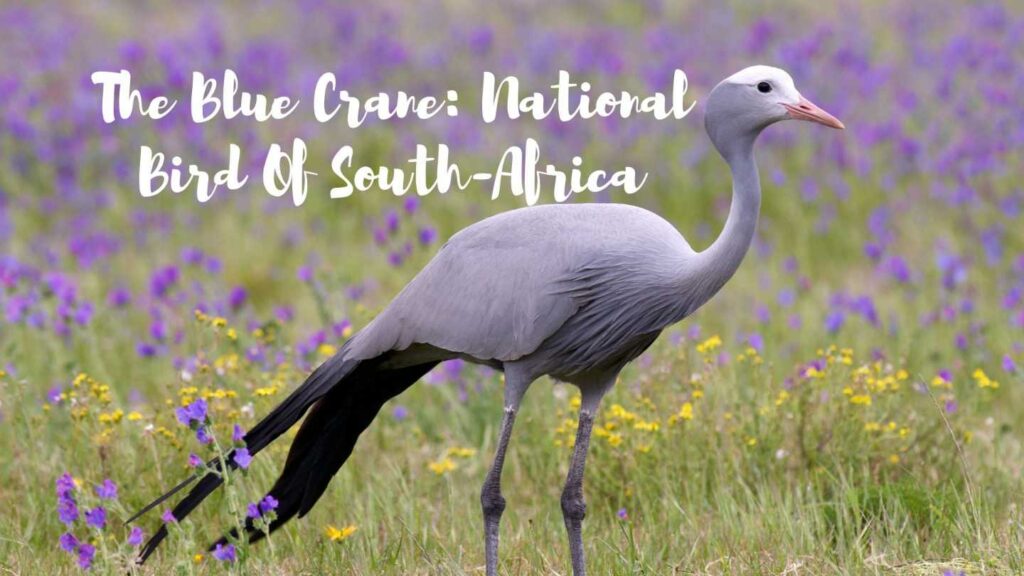
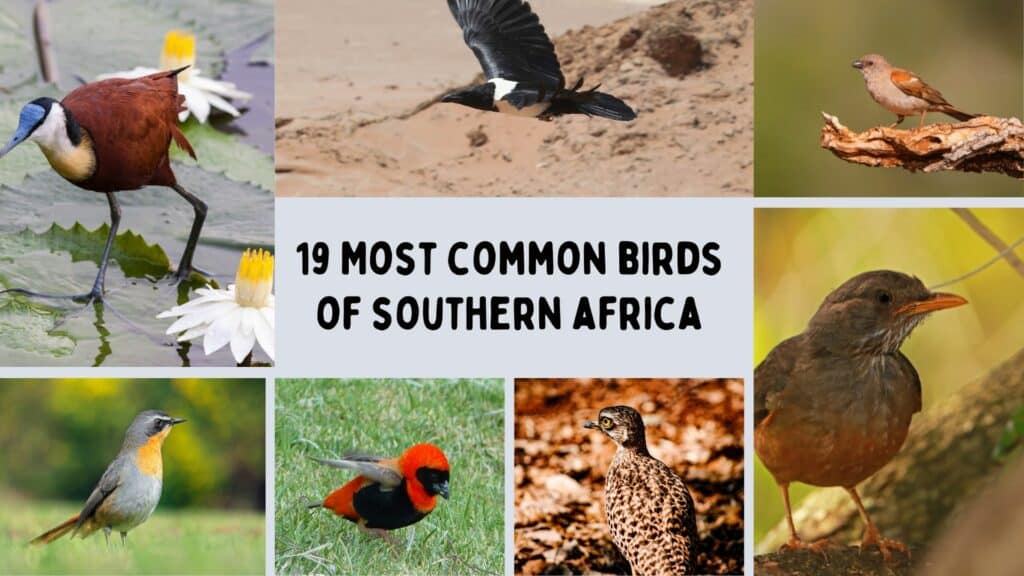
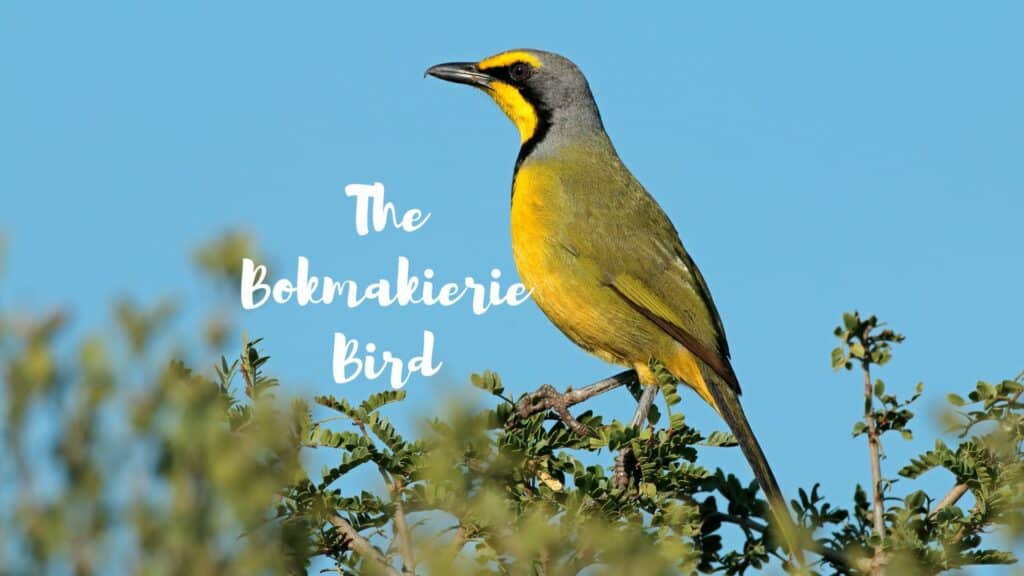





This is a very fascinating article talking about the Kori Bustard bird which is a relatively heavy bird but still just lighter enough to fly. What a strange looking bird it appears from the featured image you have at the top of the article page. It looks as though it’s standing there all puffed out like a lion’s mane or something.
A bird that weighs almost forty pounds is definitely a large bird and I can’t think of another off the top of my head that is that big and is still able to fly.
Have you seen this bird in person or have any insight on whether the lighter females are able to fly better than the males?
Hi Joseph!
I am always happy that you are so interested in African birds!
I did see this bird in Botswana, a long time ago haha, but I don’t know if there is any difference between males and females regarding their flying abilities sorry.
Happy travels!
Lizzy
To be honest with you before reading your article I had never heard of this species. There are so many in our world that is impossible to see them all. I love reading such articles and to know what lives in this world that would be otherwise impossible to know. Thank you for sharing!
I am happy to have informed you about the Kory Bustard! 😉
I wish you happy birding!
Kind regards,
lizzy